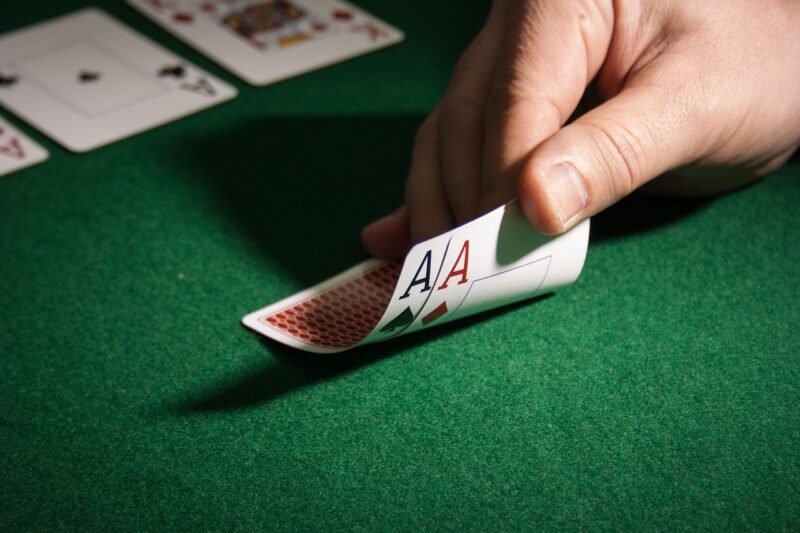Once the chips have been wagered and the cards revealed, the real test of a poker player’s skill begins: postflop strategy. Mastering the art of navigating the complex landscape of community cards,bet sizes,and opponent behaviour is a challenging yet essential aspect of becoming a successful poker player. In this article, we will delve into the nuances of postflop strategy and explore the tactics and techniques that can elevate your game to the next level. So, sharpen your mental acuity and buckle up for a thrilling journey into the heart of poker postflop play.
Crafting a Solid Postflop Strategy
When it comes to mastering the art of poker postflop strategy, there are several key factors to consider. One of the most important aspects is understanding your opponent’s playing style and tendencies. By observing how they act after the flop, you can adjust your own strategy accordingly.
Another crucial element in is being able to accurately assess the strength of your hand. This involves not only considering your own cards, but also taking into account the community cards on the board. Knowing when to bet, raise, or fold based on the strength of your hand is essential in becoming a successful poker player.
Additionally, utilizing position to your advantage can greatly impact your postflop strategy. Being in late position allows you to see how your opponents act before making your own decision, giving you valuable data to make the best possible play. Conversely, being out of position puts you at a disadvantage, as you are forced to act first without knowing how your opponents will respond.
Understanding Board Texture and Player Tendencies
is crucial in mastering postflop strategy in poker. Board texture refers to the composition of the community cards on the table, which greatly impacts the range of possible hands each player could have.It is essential to analyze the board texture to make informed decisions during the hand.
Player tendencies play a critically important role in postflop strategy as well. By observing how your opponents play in different situations, you can gain insights into their playing style and tendencies. Such as, if a player frequently bluffs on certain board textures, you can adjust your strategy to exploit this weakness and make more profitable decisions.
To effectively use board texture and player tendencies in your postflop strategy, consider the following tips:
- Analyze the board texture: Look for potential draws, paired boards, or coordinated cards that could help your opponents.
- Observe player behavior: Pay attention to betting patterns, aggression levels, and showdown hands to understand how your opponents play.
- Adjust your strategy: Use the information gathered to make strategic decisions,such as bluffing on certain boards or value betting against specific opponents.
Implementing these strategies in your poker game can help you become a more strategic and successful player, ultimately leading to more profitable results at the tables.
Maximizing Value with Strong Hands
When it comes to in poker, postflop strategy plays a crucial role.Knowing how to extract the most chips from your opponents when you have a premium hand is a skill that separates good players from great ones. By mastering the art of postflop play, you can increase your win rate and make the most of your strong holdings.
One key aspect of is understanding your opponent’s range. By assessing their likely holdings based on their actions preflop and postflop,you can tailor your bets and raises to extract the most value. Pay attention to their tendencies, bet sizing, and overall playing style to make informed decisions on how to best proceed with your strong hand.
Another important factor in is utilizing deception. By mixing up your play and not always betting when you have a strong hand,you can keep your opponents guessing and extract more value when you do choose to make a move. Balancing your range and incorporating bluffs into your strategy can help you maximize the value of your premium holdings.
Optimizing Bluffing Frequency and Balance
Bluffing is a crucial aspect of poker postflop strategy that requires a delicate balance. To optimize bluffing frequency and maintain balance in your gameplay, it is essential to consider various factors and tactics. One key strategy is to mix in bluffs with strong hands to keep your opponents guessing. By varying your bluffing frequency,you can effectively manipulate your opponents’ decisions and gain an edge at the table.
Another critically important element in mastering bluffing frequency and balance is understanding your opponents’ tendencies and adjusting your strategy accordingly. By observing their gameplay and identifying patterns, you can tailor your bluffing frequency to exploit their weaknesses. Additionally, being aware of your own image at the table is crucial in determining when to bluff and when to play more conservatively.
Creating a balanced range of hands is essential in optimizing bluffing frequency. By incorporating a mix of strong hands, semi-bluffs, and pure bluffs in your postflop strategy, you can keep your opponents off guard and increase your overall profitability. Remember to adjust your bluffing frequency based on the specific dynamics of the table and always stay adaptable to changing circumstances.
Utilizing Positional Advantage for Profit
Utilizing positional advantage is a crucial aspect of mastering postflop strategy in poker. When you have position on your opponents, you have more control over the hand and can make more informed decisions based on their actions. This allows you to extract more value from your strong hands and bluff more effectively when you sense weakness.One way to maximize your positional advantage is to pay close attention to your opponents’ tendencies. By observing how they play in certain positions and adjusting your strategy accordingly, you can exploit their weaknesses and capitalize on their mistakes. This information can help you make more accurate reads and make better decisions postflop.
Another key strategy is to vary your play based on your position at the table. For example, when you are in early position, you should play tighter and only enter pots with strong hands. As you move around the table and gain better position,you can loosen up and play more aggressively with a wider range of hands. By adjusting your range based on your position, you can keep your opponents guessing and maintain an edge in the game.
| Position | Strategy |
|---|---|
| Early Position | Play tight, only enter pots with strong hands. |
| Middle Position | Loosen up, play more aggressively with a wider range of hands. |
| Late Position | Exploit your positional advantage, control the hand. |
Q&A
Q: What is postflop strategy in poker?
A: Postflop strategy in poker refers to the decisions and tactics used by players after the flop is dealt (the first three community cards).It involves analyzing the strength of one’s hand, assessing the potential of the board, and making calculated bets to maximize winnings.
Q: Why is mastering postflop strategy important in poker?
A: Mastering postflop strategy is crucial in poker because it is where the majority of the game is played. By understanding how to navigate postflop scenarios effectively, players can outmaneuver their opponents, capitalize on opportunities, and increase their chances of winning.Q: What are some key principles to keep in mind when developing a postflop strategy?
A: Some key principles to keep in mind when developing a postflop strategy include position, hand reading, board texture, bet sizing, and opponent tendencies. These factors can help players make informed decisions and adapt their gameplay to different situations.
Q: How can players improve their postflop strategy skills?
A: Players can improve their postflop strategy skills through practice, study, and experience. Analyzing hand histories, watching training videos, and discussing strategy with other players can all contribute to a deeper understanding of postflop play.Q: What are some common mistakes to avoid in postflop strategy?
A: Some common mistakes to avoid in postflop strategy include playing too passively, overvaluing marginal hands, and failing to adjust to changing dynamics. By recognizing and correcting these errors, players can become more effective postflop strategists.
To Wrap It Up
In conclusion, mastering the art of poker postflop strategy requires patience, practice, and a keen understanding of the game. By studying the tactics and strategies outlined in this article,you can improve your skills and enhance your chances of success at the poker table. Remember, the key to becoming a successful poker player lies in continual learning and adaptation.So, keep honing your skills, trust your instincts, and always play with confidence. Good luck at the tables!








